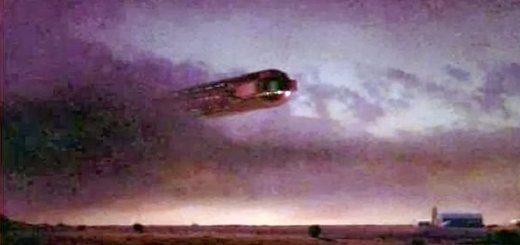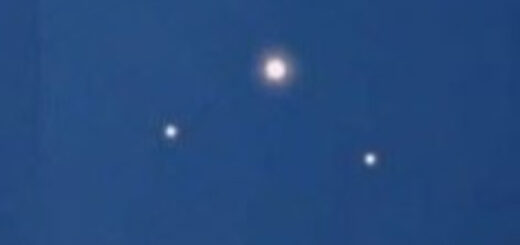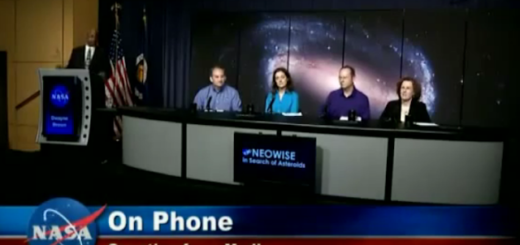Jupiter: Anatomy of a Gas Giant

Jupiter’s got superlatives to spare. We’d expect nothing less from a body named after a mythic king of the gods. Not only is Jupiter the biggest planet in our solar system, but it also spins at the fastest rate and boasts the largest number of moons — by a good margin, at that.
This is a world where the days may be short, but a storm can rage on for centuries. And science enthusiasts can’t get enough of it.
Size Does Matter
Let’s take a moment to review Jupiter’s crazy proportions. At its equator, the fifth planet from our sun is about 89,000 miles (143,000 kilometers) wide. Were Jupiter a hollow shell, you could cram more 1,300 Earths inside it. By the way, did you know that Jupiter has around 318 times the mass of our beloved home world? As a matter of fact, the stormy colossus is two-and-a-half times as massive as all the other planets in this solar system combined.
Big as it is though, next to the sun Jupiter still looks puny. This familiar yellow star accounts for a staggering 99.8 percent of all the mass in the solar system — Jupiter included. Nevertheless, the planet is large enough to affect the sun in ways that Earth never could.
You see, it’s not quite accurate to say Jupiter orbits the sun. These two bodies share a “barycenter,” a common center of mass around which they both revolve. The sun maintains an individual barycenter with every single one of its planets.
Now the size disparity between the sun and Earth is unbelievably vast. Because the relationship is so skewed, their shared barycenter is located within the sun itself. (After all, the sun’s got way more mass.)
Ah, but Jupiter’s a different story. Since the planet is so big, its barycenter with the sun resides outside of the star, at a point well above the solar surface. And here’s another fun fact: Jupiter’s gargantuan bulk gives the sun a slight — but noticeable — wobble. So if scientists ever detect that kind of tottering motion in a far-off star, it could mean that a Jupiter-sized planet is nearby.
Relative size isn’t the only thing setting Earth and Jupiter apart. Compositionally, the two worlds are totally different. Mercury, Venus, Earth and Mars are all classified as terrestrial planets, meaning that they have hard outer surfaces and mostly consist of metals or silicate rocks.
On the other hand, Jupiter is the quintessential gas giant. Such planets lack outer crusts and as the name would suggest, they’re overwhelmingly composed of gasses. For its part, Jupiter’s two major ingredients are hydrogen and helium, though smaller quantities of methane, ammonia and water have also been detected.
Since it doesn’t have a hard crust, scientists define Jupiter’s “surface” as the outer level at which its atmospheric pressure equals that of Earth. Far below this external area, there’s a layer dominated by molecular hydrogen. Beneath that, you’ll find a level whose primary component is liquid metallic hydrogen. (A material reminiscent of the liquid mercury we find on our own planet.)
The core at Jupiter’s very center inspires much debate. Some astronomers have argued that it doesn’t even exist and may have long since disappeared. Data collected by NASA’s Juno spacecraft tells us the core is probably real, but we still don’t know what it’s made of. However, the thing does appear to be less condensed than planet Earth’s iron and nickel-based inner core.
OK, so what’s the deal with Jupiter’s so-called surface? Well, if you look at the planet through a good telescope, you’ll notice alternating bands of color that run horizontally across it.
Amazingly, neighboring bands move in opposite directions. Astronomers call the darker ones “belts” while their lighter counterparts have been dubbed “zones.” Variations in chemistry, transparency and/or temperature might explain the observed color differences between them. Zones and belts constantly change shape because these colorful lines are really ammonia clouds in Jupiter’s atmosphere.
Storm-watching on Jupiter
Tempests riddle the gas giant. Down in Jupiter’s Southern Hemisphere, there’s a series of oval-shaped storms that rotate counterclockwise. Being whitish in coloration, these have been nicknamed the “string of pearls.” Since 1986, the exact number of “pearl” storms varied from six to nine, with eight being visible when Juno photographed the string on Dec. 11, 2016.
Far better-known is the Great Red Spot. An epic storm with a crimson tint, it contains winds that swirl around at a rate of 270 miles per hour (434.5 kilometers per hour). Caught between two powerful jet streams — one to the east and one to the west — the spot hangs out at a latitude of 22 degrees below the equator. Although researchers think the storm may be shrinking, its current dimensions are still highly impressive. At 10,159 miles (16,350 kilometers) wide, the Great Red Spot is large enough to envelop our entire planet.
Astronomers have been keeping a constant eye on the storm since 1830. Therefore, we know, at minimum, the thing is more than 180 years old. Its longevity may have something to do with Jupiter’s rotation speeds.
Your hometown completes a new spin around Earth’s axis once every 24 hours. But since Jupiter is largely gaseous, some of its latitudinal regions rotate faster than others do. At the poles, a day on Jupiter lasts for 9 hours and 56 minutes. Meanwhile, places near the planet’s equator witness brisk, 9 hour and 50-minute days.
Still, no matter how you slice it, Jupiter has the shortest days of all the planets in this solar system.
Like Saturn, Jupiter also has rings — albeit, less dramatic ones. Discovered in 1979, the Jovian ring system comes in four major subsets, with the widest ring possessing an outer radius of about 140,429 miles (226,000 kilometers). Made of small, grain-like particles, astronomers think the rings formed during collisions between hard, rocky objects like meteorites and moons.
And speaking of moons, they’re extremely common around Jupiter. No fewer than 79 known moons are currently orbiting the gas giant. Five of these received official names in August 2019. Dubbed Pandia, Ersa, Eirene, Philophrosyne and Eupheme, the newfound moons reflect a proud nomenclatural tradition. The planet Jupiter’s namesake is the Roman god of lightning — and his counterpart in Greek mythology is the electrifying Olympian known as Zeus.
So whenever astronomers discover a new Jovian moon, they name it after a mythic lover or descendant of these gods. Since both deities were a bit on the amorous side, we probably won’t run out of names anytime soon.



 Creators of mankind
Creators of mankind Description of “Tall white aliens”
Description of “Tall white aliens” Where they came from?
Where they came from? About hostile civilizations
About hostile civilizations The war for the Earth
The war for the Earth “Tall white aliens” about eternal life
“Tall white aliens” about eternal life Video: “Nordic aliens”
Video: “Nordic aliens” Aliens
Aliens Alien encounters
Alien encounters The aliens base
The aliens base UFO
UFO Technology UFO
Technology UFO Underground civilization
Underground civilization Ancient alien artifacts
Ancient alien artifacts Military and UFO
Military and UFO Mysteries and hypotheses
Mysteries and hypotheses Scientific facts
Scientific facts


















